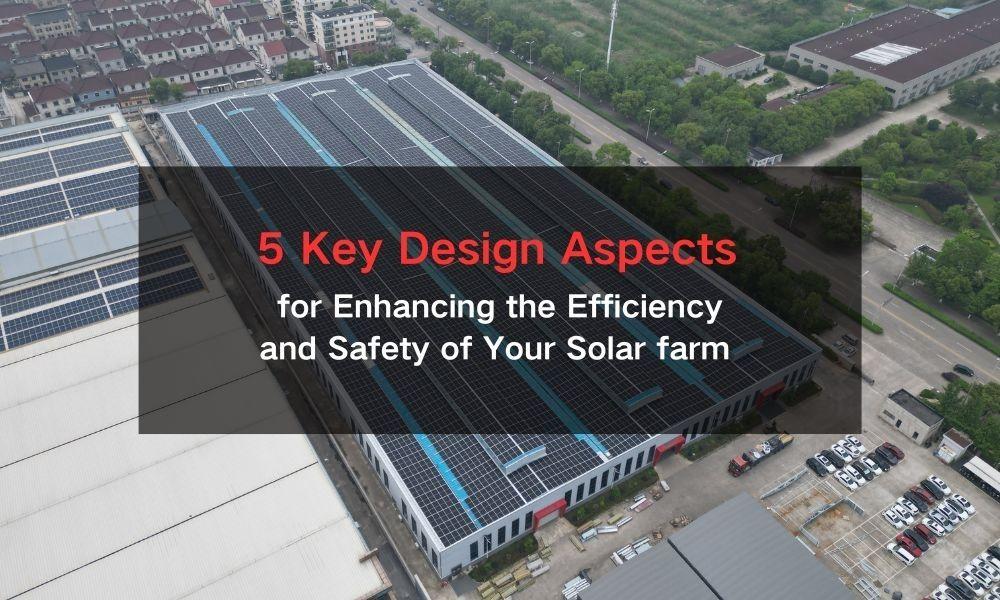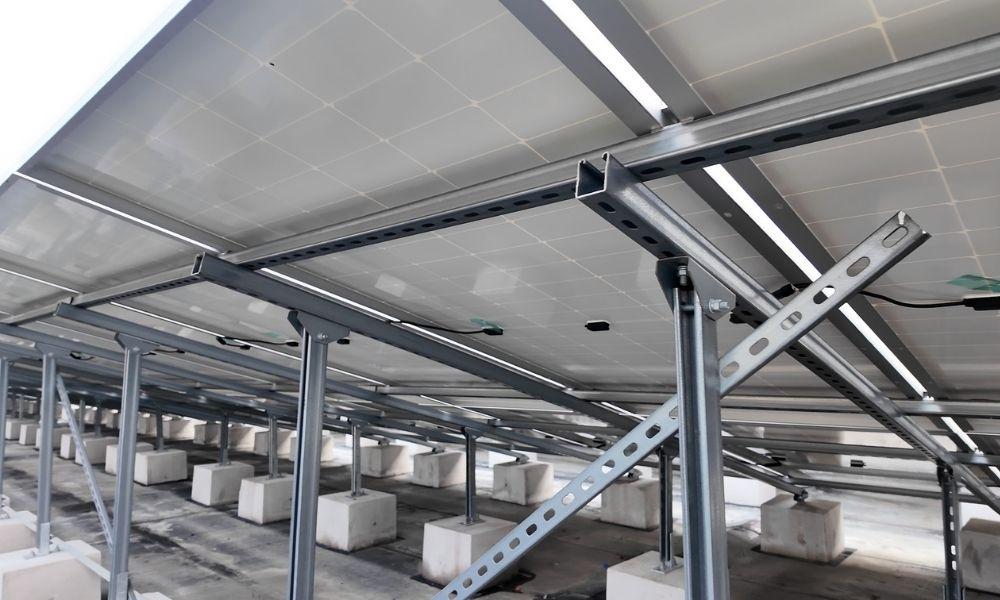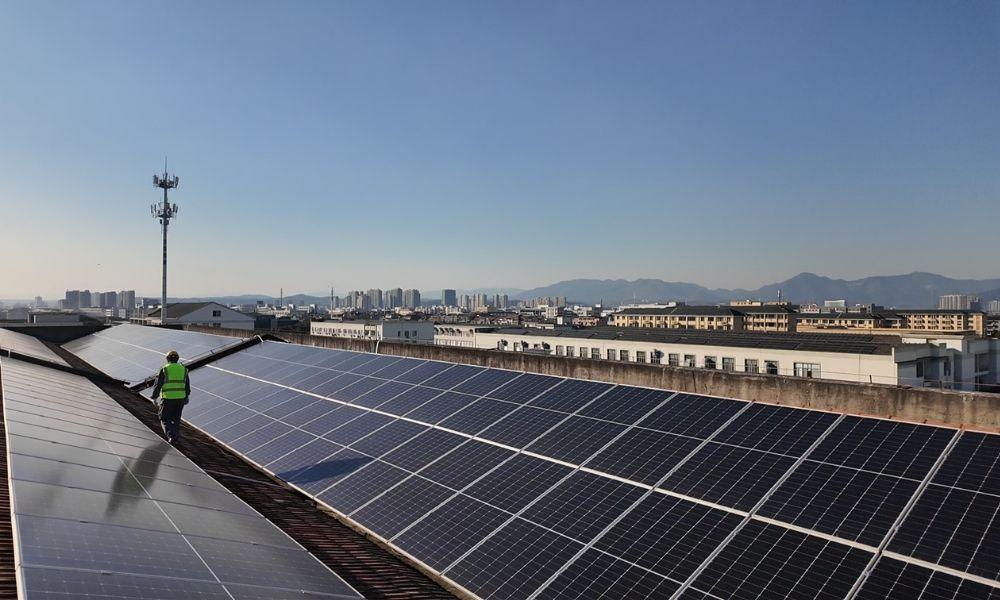5 Key Design Aspects for Enhancing the Efficiency and Safety of Your Solar farm

Solar Panel Selection and Tilt Optimization
In the design of the electrical system of a solar farm, the selection of the solar panel is the first and crucial step. It is like the “energy heart” of the power station, and its conversion efficiency directly determines how much solar energy the power station can capture and convert into electricity.
Currently, the conversion efficiency of polycrystalline silicon modules needs to reach ≥16.5%, while monocrystalline silicon modules should be ≥21%, and monocrystalline silicon modules are slightly more expensive, the design can be based on the project environment and budgetary considerations, for example, in the desert area with extremely abundant light resources, monocrystalline silicon modules, by virtue of their higher conversion efficiency, can generate more electricity under the same light conditions. This power generation gain can completely cover the initial cost difference in long-term operation, bringing more considerable income for the power station.

Additionally, mitigating shading is critical for maximizing electricity generation. An appropriate array spacing can reduce energy loss by 15% to 20%. A thorough site survey should be conducted prior to design to identify potential shading sources, with particular attention given to the spacing of mounting brackets in the actual design.
Inverter Matching and Layout
The inverter serves as the "heartbeat" of the electrical system in a solar farm, playing a key role in converting direct current to alternating current. Its selection is directly related to the power station's power generation efficiency and economic benefits.

Currently, string inverters and centralized inverters are the two mainstream products on the market, each having unique advantages and applicable scenarios. String inverters are suitable for complex mountainous terrains or distributed industrial and commercial projects, while centralized inverters are more appropriate for large-scale ground-mounted plants. The appropriate type of inverter should be selected according to the size of the solar farm, output power, and site conditions.
Lightning Protection and Grounding System
In areas with frequent lightning activities or during the thunderstorm season, direct lightning is like a “bomb” that may fall at any time, posing a great threat to the safety of solar farms. According to statistics, the accident rate of lightning strikes in these areas is 40% higher than that in other areas. Once subjected to direct lightning strikes, the solar panels are likely to be instantly pierced, resulting in serious damage. In the design process should be a reasonably designed grounding system. When direct lightning occurs, the strong current can quickly flow through the grounding system into the earth, thus protecting the solar panel from damage.
Cable and Distribution System Design
Cable is the “blood vessel” of power transmission in a solar farm, and its selection directly affects the operation efficiency and stability of the power station . Through real-time monitoring and analysis of soil thermal resistance coefficient and ambient temperature, a mountainous power station reasonably adjusted the cable selection, successfully reducing the cable investment by 12%, while controlling the voltage loss within 2%. This not only reduces the cost, but also improves the efficiency of power transmission, which can be said to be two birds with one stone. Reasonable distribution network structure, insulation protection, and protective measures can effectively reduce the risk of short circuits, overload, and leakage.
O&M Design
To ensure long-term stable operation of the solar farm, it is essential for the operating personnel to conduct inspections and maintenance. Therefore, it is crucial to allocate reasonable maintenance access routes and inspection spaces.

In summary, when designing a solar farm, it is important to select efficient, high-capacity, and stable-performing solar panels while considering their arrangement. The protection level of inverters should match the local environment, and the number of collection lines should be minimized. Suitable cable cross-sections should be chosen based on cable length and capacity calculations to reduce line losses. A reliable grounding system for the entire power plant must be ensured, and adequate O&M space should be planned.